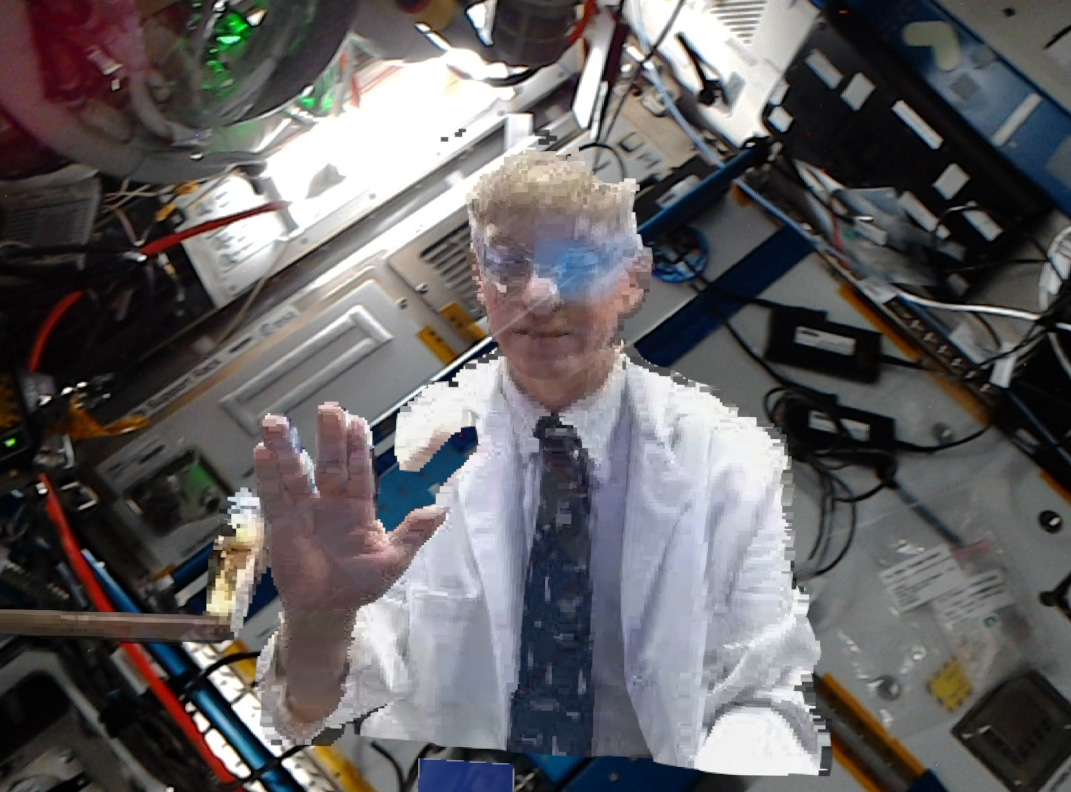 While most GPs were focussing on how to safely get people into the local clinic, figuring out telehealth and navigating carpark consultations, a team from NASA was taking the concept of online appointments to a whole new level, one that is literally ‘out of this world.’
While most GPs were focussing on how to safely get people into the local clinic, figuring out telehealth and navigating carpark consultations, a team from NASA was taking the concept of online appointments to a whole new level, one that is literally ‘out of this world.’
For the first time ever a NASA flight surgeon, Dr. Josef Schmid, was beamed up to the International Space Station (ISS) on October 8th last year, appearing virtually with his team via ‘holoportation’ to converse in real-time with French astronaut Thomas Pequet in a scene straight out of science fiction.
Dr Schmid’s team was projected onto the ISS using Microsoft’s Hololens Kinect camera and a personal computer with custom software developed by Aexa Aerospace, whose CEO Fernando De La Pena Llaca, also participated in the experiment (appearing alongside Schmid).
Speaking to NASA, Dr Schmid said that this is a completely new form of human communication across vast distances.
“Furthermore, it is a brand-new way of human exploration, where our human entity is able to travel off the planet. Our physical body is not there, but our human entity absolutely is there,” Dr Schmid said.
“It doesn’t matter that the space station is traveling 17,500 mph and in constant motion in orbit 250 miles above Earth, the astronaut can come back three minutes or three weeks later and with the system running, we will be there in that spot, live on the space station.”
“We’ll use this for our private medical conferences, private psychiatric conferences, private family conferences and to bring VIPs onto the space station to visit with astronauts.”
Holoportation is an immersive communication system that leverages consumer augmented reality (AR) and virtual reality (VR) display technologies, and combines these with a state-of-the-art, real-time 3D capture system.
Developed by Microsoft in 2016, the system can capture the people, objects and motions within a room, using a set of custom depth cameras, before transmitting the 3D content to remote participants in real-time.
However, the technology is not completely holographic yet and participants still need AR or VR headsets to ‘see’ and ‘hear’ the holoport.
Even though the ability to project a team of doctors off-planet is astounding, the Earthbound applications for this technology are even more exciting, especially considering the current challenges in providing health care to people in remote locations such as ships at sea, oilrigs and outback communities.
Microsoft has also predicted a range of other specific one-to-one uses for future development including:
- Family gatherings, where a remote participant could visit with loved ones or join a birthday celebration.
- Personal instruction, where a remote teacher could provide immediate feedback on dance moves, or yoga poses.
- Design meetings, where remote parties could share and interact with physical or virtual objects.
“Imagine you can bring the best instructor or the actual designer of a particularly complex technology right beside you wherever you might be working on it… you can work on the device together, much like two of the best surgeons working during an operation,” Dr Schmid said.
 Dr Schmid on the ISS_Credits_ESA astronaut Thomas Pesquet
Dr Schmid on the ISS_Credits_ESA astronaut Thomas Pesquet

